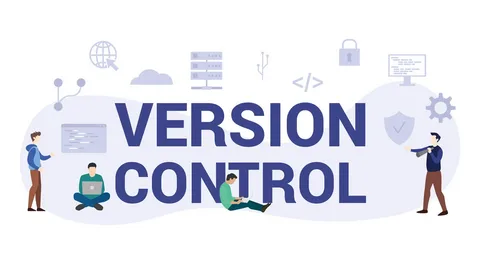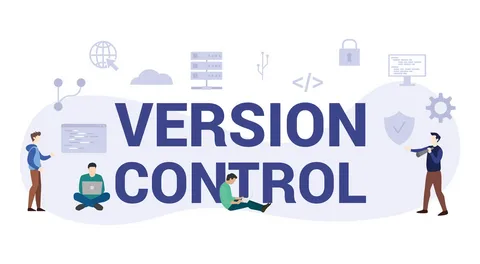Version Control: The Backbone of Modern Software Development
In the world of software development, collaboration and tracking changes are crucial elements for creating and maintaining successful projects. One of the most effective tools for managing this complexity is version control. Whether you’re working in a solo environment or as part of a large development team, version control systems (VCS) allow developers to track, manage, and coordinate changes to codebases with ease.
In this article, we’ll explore what version control is, why it’s important, how it works, and some of the most popular version control systems in use today.
What is Version Control?
Version control refers to the practice of tracking and managing changes to software code over time. It allows developers to maintain a history of modifications, revert to previous versions, and work collaboratively without the risk of overwriting each other’s work.
Version control is essential because it enables developers to keep track of every change made to the codebase, who made the change, when it was made, and why it was necessary. Whether it’s fixing bugs, adding new features, or refining the user interface, version control ensures that developers can safely make changes while maintaining the integrity of the project.
In addition to software development, version control is used in a variety of fields such as documentation, configuration management, and content management systems.
Why is Version Control Important?
1. Collaboration
Version control allows multiple developers to work on the same project simultaneously without worrying about conflicts. Without version control, collaborating on code would be a nightmare, as one developer’s changes could easily overwrite another’s. By using a VCS, developers can commit their changes, review others’ contributions, and merge them into the main codebase with minimal risk of conflict.
This collaborative aspect is particularly important in large teams, where dozens or even hundreds of developers may be contributing to the same project.
2. Track Changes and History
With version control, every change made to the codebase is tracked and stored in a repository. This means that a complete history of the project is maintained, and developers can see who made which changes and when. This history provides context and allows for:
- Understanding the rationale behind changes: Each commit is typically accompanied by a message explaining the reasoning behind the update.
- Reverting to previous versions: If a bug is introduced or a change breaks functionality, developers can revert to a previous stable version of the code quickly.
- Auditing and accountability: Version control provides a clear audit trail, making it easy to see who contributed to specific changes and when they were made.
3. Backup and Recovery
Version control systems act as an automatic backup mechanism. As developers commit their changes, they are safely stored in a repository, which can be remote (on a server) or local. In the event of data loss (such as a hard drive failure or accidental deletion), the code can be recovered from the version control system.
Moreover, since each commit captures a snapshot of the codebase, developers can quickly retrieve previous versions of files and restore the project to a working state.
4. Branching and Merging
Branching is one of the most powerful features of version control. It allows developers to create separate lines of development to work on different features or bug fixes without affecting the main codebase (often called the master or main branch). Once the work on a branch is complete and tested, it can be merged back into the main branch. This capability enables:
- Parallel development: Different team members can work on different features or fixes simultaneously without interrupting each other’s workflow.
- Experimentation: Developers can create experimental branches to try new ideas or refactor code without risking the stability of the main branch.
- Feature releases: Branching allows for the development of features in isolation, which can then be released when fully tested and stable.
5. Enhanced Quality Assurance
Version control systems enable seamless integration of continuous integration (CI) and continuous delivery (CD) pipelines. These pipelines automatically test and deploy code changes whenever new commits are made to the repository. This helps ensure that the code is always in a deployable state and that errors are caught early in the development cycle.
In addition, version control facilitates code review processes, where developers can review changes made by others before they are merged into the main codebase. This collaborative review improves the overall quality of the code and helps catch potential issues early.
Types of Version Control Systems
Version control systems can be divided into two main categories:
1. Centralized Version Control Systems (CVCS)
In a Centralized Version Control System (CVCS), there is a central repository where all versions of the code are stored. Developers commit their changes to this central repository and check out the latest version of the project from it. Each developer has their own working copy of the project, but they interact with the same central server to synchronize changes.
Advantages of CVCS:
- Simplicity: CVCS systems are easier to set up and use, making them ideal for smaller teams.
- Centralized management: A central repository makes it easier to manage access and track changes.
Disadvantages of CVCS:
- Single point of failure: If the central server goes down, developers cannot commit changes, check out the latest code, or view previous versions.
- Limited offline capabilities: Developers must be connected to the central server to commit and access changes.
Examples of Centralized Version Control Systems:
- Subversion (SVN)
- CVS (Concurrent Versions System)
- Perforce (Helix Core)
2. Distributed Version Control Systems (DVCS)
A Distributed Version Control System (DVCS) allows each developer to have their own local repository, which is a full copy of the entire project history. Developers can commit changes locally, and when they are ready, they can push their changes to a central repository (or synchronize with other developers). Each developer can work independently of the central server, making this system more flexible and resilient.
Advantages of DVCS:
- Offline work: Developers can commit changes locally even when they are not connected to the central server.
- Redundancy: Since every developer has a full copy of the repository, there is no single point of failure.
- Faster operations: Most operations (like commits, diffs, and history browsing) are done locally and are faster compared to CVCS systems.
Disadvantages of DVCS:
- More complexity: DVCS can be more complex to manage, particularly when dealing with conflicts and merging changes.
- Coordination required: Developers must regularly synchronize with other team members to ensure consistency.
Examples of Distributed Version Control Systems:
- Git (most popular, used by platforms like GitHub, GitLab, Bitbucket)
- Mercurial
- Bazaar
Popular Version Control Systems

1. Git
Git is the most popular distributed version control system. Developed by Linus Torvalds (creator of Linux), Git allows developers to track code changes efficiently and is the foundation for many collaborative platforms such as GitHub, GitLab, and Bitbucket. Git is widely used due to its flexibility, speed, and robust branching and merging features.
2. Subversion (SVN)
SVN is a centralized version control system that has been used for many years, particularly in enterprise environments. While it has been overtaken by Git in popularity, SVN is still in use in some legacy systems. SVN is known for its simplicity and ease of use for small to medium-sized projects.
3. Mercurial
Mercurial is another distributed version control system similar to Git. It has a simpler interface than Git and focuses on ease of use and performance. While Mercurial isn’t as widely adopted as Git, it is still favored in some open-source and enterprise projects.
Conclusion
Version control is a fundamental aspect of modern software development. It allows teams to collaborate efficiently, track changes, maintain project histories, and improve code quality. Whether you’re working on a small personal project or a large enterprise system, version control systems like Git, SVN, and Mercurial provide the tools needed to manage your codebase effectively.
By using version control, developers can work more confidently, knowing they have full control over their code’s history and can recover from mistakes or errors without fear. It’s an indispensable practice that has become the standard in both individual and team-based software development workflows.

